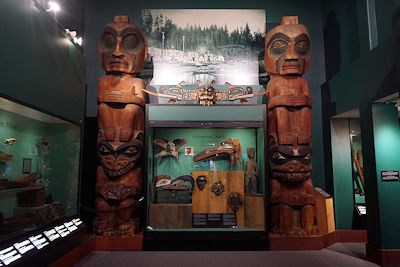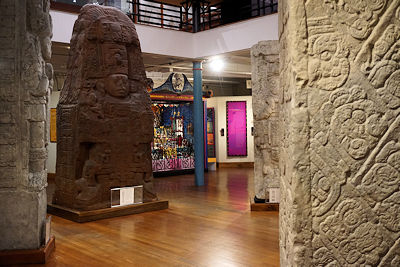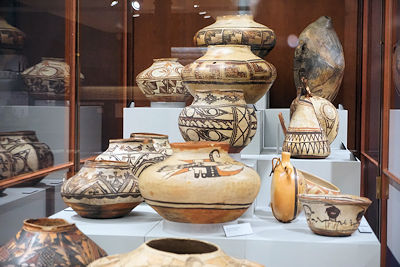
During the 1800s, higher education in the United States was at a crossroads. Colleges and universities had been under the influence of religious clergymen ever since the first settlers began to colonize the newly found America, but the increased emphasis on science over theology in Europe – as well as the acceptance of Charles Darwin’s theory of evolution – made the American approach more and more obsolete.
Harvard University in Cambridge, Massachusetts, was one of the many institutes of high education that experienced an existential crisis in the 1800s. The situation became particularly acute for Harvard in 1861 with the nearby establishment of the Massachusetts Institute of Technology (MIT), a university fully committed to scientific and technological advancements as opposed to the religious.
Sensing the rising tide, the overseeing of Harvard University was transferred from the state legislature to university alumni in 1865. Four years later, Charles Elliot was elected president of Harvard and began the shift to a more scientific curriculum for the university. This new approach was also advocated by the newly founded Peabody Museum, funded by a $150,000 donation by philanthropist George Peabody.
After traveling to Europe and meeting with Charles Darwin, famed paleontologist O.C. Marsh –Peabody’s nephew – became convinced that the United States needed an anthropology museum that highlighted the evolution and prehistory of America. Frederic Ward Putnam, the Peabody Museum’s second director, agreed and immediately set out to establish anthropology as an academic discipline not only at Harvard University but institutions across the United States as well.
Of particular interest to Frederic Putnam were the indigenous cultures of America and the lack of knowledge regarding their past. Were they one race that had spread out across the continent? Had they always been here, or had others preceded them? Research into those question begot additional queries, but the answers were compounded by disinterest within the United States and the destruction of archaeological sites as the country expanded.
Putnam’s mission as director of the Peabody Museum was thus twofold – to educate the people of the United States on the importance of anthropology in America as well as advocate for the protection of ancient Native American dwellings so that they could be studied and understood.
Frederic Putnam’s first success in the latter was the rescuing of Serpent Mound in Ohio – an ancient earthwork built in the shape of a winding snake – from being demolished in favor of farmland. Putnam raised the necessary funds from private donors for the Peabody Museum to purchase a large swath of Serpent Mound in 1886. Students from Putnam’s newly established ethnology department at Harvard University then conducted archaeological research at Serpent Mound until 1900, when it was deeded to the state of Ohio as a park.
Frederic Putnam also traveled the country giving lectures on the field of anthropology, which was relatively unknown within the United States at the time. Putnam found an even larger platform and audience in 1893 with the opening of the World’s Columbian Exposition in Chicago. Although largely remembered today as the site of the first ever Ferris wheel – named after its creator, Pittsburgh engineer George Ferris – and Erik Larson’s 2003 historical novel The Devil in the White City, the Columbian Exposition opened the doors of anthropology to millions of Americans as well.
Putnam’s efforts are highlighted in the All the World Is Here exhibit at the Peabody Museum, which premiered in 2017 as part of the institution’s 150th anniversary celebration. “Putnam and his protégé, Franz Boas, introduced the emerging field of anthropology to the public at the World’s Columbian Exposition in Chicago,” the exhibit explains. “In contrast to the Midway where ‘exotic’ peoples were presented as curiosities, Putnam and Boas staged exhibits that they hoped would demonstrate the value of a new scientific approach to understanding human diversity and history.”
It was a needed undertaking. While science was based on evidence and logic, most Americans at the time were more drawn to the showmanship and speculative curiosities presented by the likes of P.T. Barnum. Barnum opened an American Museum in New York City in 1842 whose first exhibit was the Feejee Mermaid – a small skeleton that was supposedly acquired from the London Lyceum of Natural History.
The Lyceum never existed, however, and the skeleton of a mermaid was likewise a fake. The Peabody Museum purchased the artifact in 1899 and determined it was a combination of monkey and fish skeletons, with some papier-mâché thrown in for good measure. Americans visited the attractions of P.T. Barnum nonetheless, blurring the lines between science and fantasy.
While the Midway Plaisance at the World’s Columbian Exposition in Chicago did contain replica villages from foreign locales around the world, many of them were based on cultural stereotypes as opposed to legitimate representations. With its emphasis on “exoticism, eroticism and commercialism” – to use the words of the All the World Is Here exhibit – the Midway was a popular destination, however, upstaging the more academic displays elsewhere at the Exposition.
To combat such misrepresentations of science, Frederic Putnam hired Franz Boas – often considered the “Father of American Anthropology” – to construct alternative attractions at the World’s Columbian Exposition. Boas decided to highlight the Native Americans prevalent during the time of Christopher Columbus, coupled with the contemporary nineteenth century tribes of the Inuit and Kwakiutl.
Furthermore, Putnam and Boas designed their own anthropology exhibit, named Building M. “They displayed artifacts from around the globe,” the All the World Is Here exhibit explains, as well as “replicas of archaeological sites, working physical anthropology labs, and dwellings from different cultures, complete with live exhibits of indigenous peoples, including a Kwakwaka’wakw (Kwakiutl) village.”
Anthropology was relatively unknown within the United States in 1893, and Frederic Putnam was determined to introduce it to visitors of the World’s Columbian Exposition with exhibits focused on science rather than sensationalism. Regardless of whether those efforts succeeded, anthropology quickly gained a foothold afterwards nonetheless, with the Field Museum in Chicago purchasing many of the artifacts on display at the Exposition and hiring Franz Boas as its first curator of anthropology.
Putnam, meanwhile, continued as director of the Peabody Museum at Harvard University until 1909 while likewise overseeing the anthropological department at the American Museum of Natural History in New York City from 1894 until 1903. Like his protégé Franz Boas, Frederic Putnam was instrumental in establishing the historical importance of the indigenous tribes of North America – including those that preceded the colonization of the continent by Europeans – earning the symbolic title of the “Father of American Archaeology” in the process.
The Peabody Museum still remembers Frederic Putnam, and the museum’s focus on archaeology and ethnology stand as testament to his efforts. Because of their commitment to science, Putnam and the Peabody established American archaeology and anthropology as legitimate fields of study at a time when the sensationalism of fantasy ruled the day – an impressive feat, to say the least.
Anthony Letizia





